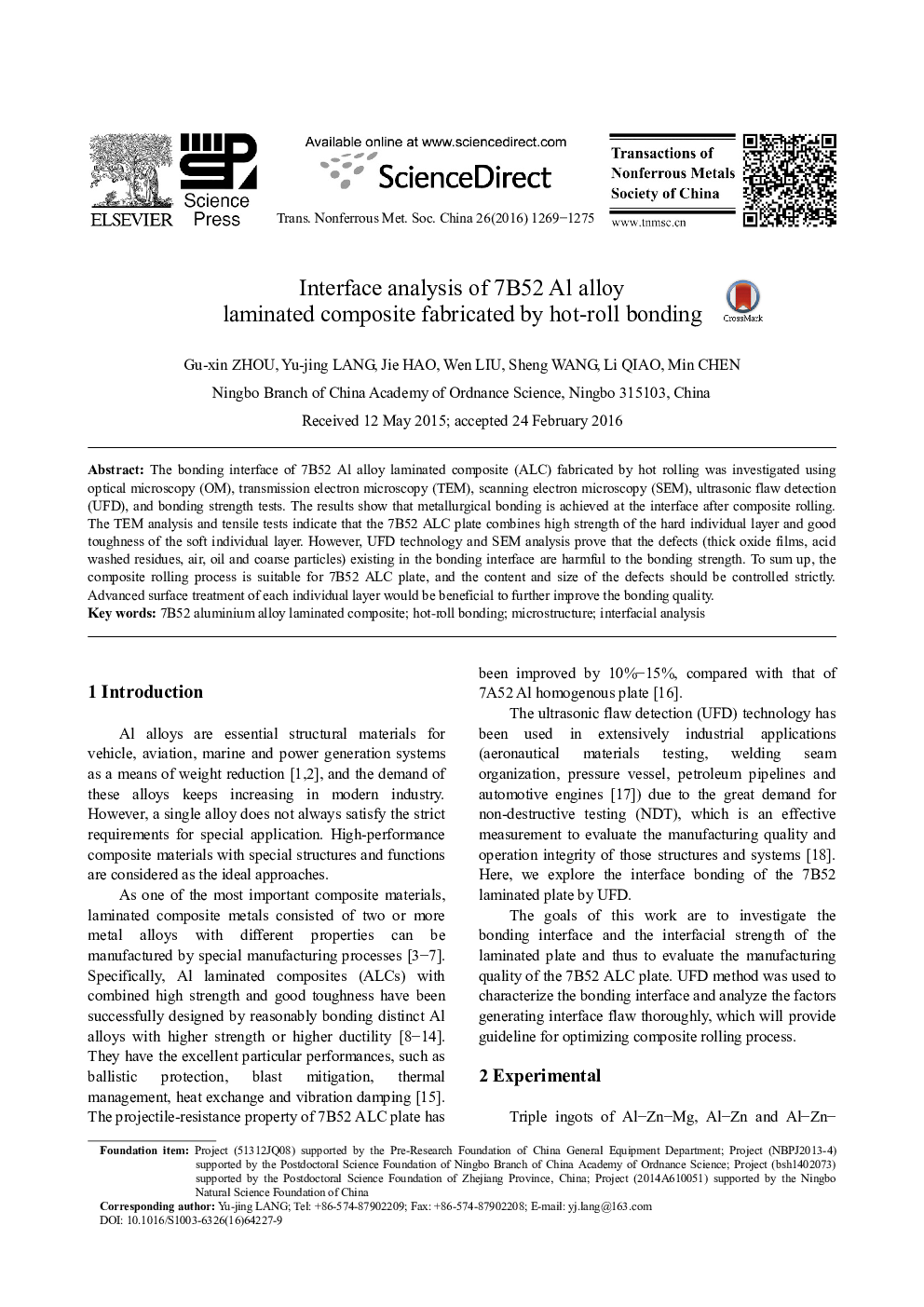| Article ID | Journal | Published Year | Pages | File Type |
|---|---|---|---|---|
| 1635620 | Transactions of Nonferrous Metals Society of China | 2016 | 7 Pages |
Abstract
The bonding interface of 7B52 Al alloy laminated composite (ALC) fabricated by hot rolling was investigated using optical microscopy (OM), transmission electron microscopy (TEM), scanning electron microscopy (SEM), ultrasonic flaw detection (UFD), and bonding strength tests. The results show that metallurgical bonding is achieved at the interface after composite rolling. The TEM analysis and tensile tests indicate that the 7B52 ALC plate combines high strength of the hard individual layer and good toughness of the soft individual layer. However, UFD technology and SEM analysis prove that the defects (thick oxide films, acid washed residues, air, oil and coarse particles) existing in the bonding interface are harmful to the bonding strength. To sum up, the composite rolling process is suitable for 7B52 ALC plate, and the content and size of the defects should be controlled strictly. Advanced surface treatment of each individual layer would be beneficial to further improve the bonding quality.
Keywords
Related Topics
Physical Sciences and Engineering
Materials Science
Metals and Alloys
Authors
Gu-xin ZHOU, Yu-jing LANG, Jie HAO, Wen LIU, Sheng WANG, Li QIAO, Min CHEN,
